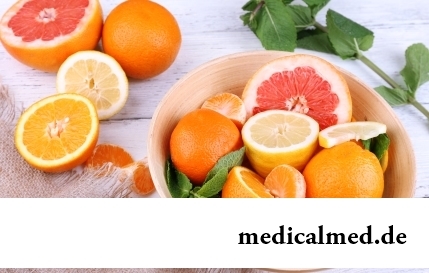





Tomato paste
Tomato paste – the concentrated weight received as a result of heat treatment of fresh tomatoes. At 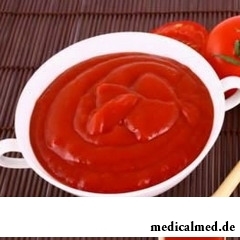 paste production ripe tomatoes are cleared of a thin skin and seeds, are wiped and uvarivatsya. During cooking as a result of evaporation of the moisture which is contained in tomatoes there is a gradual increase in concentration of dry matters up to 30-45 percent. The higher in paste concentration of dry components, the more tomatoes it was used for its preparation and subjects it is more qualitative. In the course of heat treatment tomatoes keep the most part of useful properties. Therefore the natural tomato paste made of ripe fresh tomatoes is considered very useful product.
paste production ripe tomatoes are cleared of a thin skin and seeds, are wiped and uvarivatsya. During cooking as a result of evaporation of the moisture which is contained in tomatoes there is a gradual increase in concentration of dry matters up to 30-45 percent. The higher in paste concentration of dry components, the more tomatoes it was used for its preparation and subjects it is more qualitative. In the course of heat treatment tomatoes keep the most part of useful properties. Therefore the natural tomato paste made of ripe fresh tomatoes is considered very useful product.
The paste prototype from tomatoes for the first time was made in the 19th century. At that time the Italian culinary specialists tried to make tomato sauce with addition of olive oil with garlic and pepper. Now paste from tomatoes is produced in two types – in the form of the salty paste going on sale in tin or glass jars or in the form of unsalted paste. Unsalted paste is sold most often in barrels.
Distinguish the following grades of tomato paste: extra, premium and first grade. Paste of a grade extra and the premium has saturated orange-red color. Paste of the first grade most often brownish shade. The most valuable and qualitative the paste made of the tomatoes collected and processed in one day is considered.
Structure and caloric content of tomato paste
The mass fraction of dry matter is considered a quality indicator of paste. Normal it is not necessary to add any additional components (fragrances, dyes, starch) as it contains all necessary, including small amount of salts and sugars to tomato paste.
Are a part of this product starch, mono - and disaccharides, organic acids and food fibers. A significant amount of vitamin A (300 mkg) is a part of paste. There are in it also RR vitamins, E, C, B1 and B2 vitamin. Many useful properties of tomato paste are explained by the considerable content of potassium (875 mg), phosphorus (68 mg) and magnesium (50 mg). Besides, paste contains iron, sodium and calcium.
Caloric content of tomato paste – 100 kcal on hundred grams of a product. Hundred grams of a product contain 4,8 g of proteins and 19 g of carbohydrates.
Useful properties of tomato paste
Low caloric content of tomato paste allows to consider her a dietary product. The tomato diet is also recommended at diseases of veins and tendency to a thrombogenesis. Recommend paste and at rheumatism, gout.
According to scientists, the greatest concentration of useful natural antioxidant of lycopene is observed not in fresh tomatoes, namely in the boiled or baked vegetables. This valuable natural component in paste is approximately ten times more, than in fresh tomatoes. It is proved that antioxidant the lycopene protecting organism cells from a negative impact of the environment and from a senilism is much better acquired after temperature processing. Therefore useful properties in tomato paste it is much bigger, than in fresh tomatoes.
High 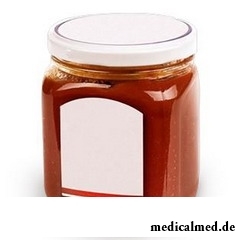 content of potassium in this product provides full functioning of cardiovascular system, and also helps to lower arterial pressure.
content of potassium in this product provides full functioning of cardiovascular system, and also helps to lower arterial pressure.
The American doctors recommend to eat as often as possible paste from tomatoes. In their opinion if daily to use though a small amount of tomato paste or sauces from it, the risk of development of oncological diseases decreases half. Tomato paste, as well as in tomatoes, contains joy hormone – serotonin. Therefore its use helps to cope with a stress and increases mood. It is daily desirable to use not less than three dessertspoons of tomato paste. It is the best of all to combine fresh tomatoes and sauces on their basis. It is important that lycopene is acquired only in the presence of fats.
Paste from tomatoes improves digestion. At the use of a product the increased allocation of a gastric juice is observed. For this reason it is useful to use paste with heavy food, for example, with macaroni.
In the spring this useful foodstuff can perfectly replace carrots. It contains the vitamin A useful to sight and slowing down aging processes. Phosphorus in paste promotes strengthening of teeth, a bone tissue and nails.
Harm of tomato paste
Speaking about harm of tomato paste, it should be taken into account that the natural qualitative product is almost not capable to influence a human body negatively. Harm from tomato paste can be notable if at its production cheap raw materials with addition of water, starch, stabilizers and preservatives were used.
With care it is necessary to use paste at a hyperoxemia of a gastric juice, at gastritis or a peptic ulcer of a stomach, at cholelithiasis. The excessive use of paste can lead to increase in acidity and emergence of unpleasant feelings in a stomach.
During life the average person develops neither more nor less two big pools of saliva.

One of the major chemical processes happening in a human body are oxidation reactions. They go with participation of fats...
Section: Articles about health
It is pleasant to state a possibility of improvement of quality of life of people with problems of functioning of secretory system. Efforts of talented inventors created products which will be able to provide normal life activity of clients with moderate degree for...
Section: Articles about health
Smack in a mouth can arise in the natural way – as a result of lack of morning hygiene or reception of the corresponding food. However in certain cases its existence is a sign of certain pathologies, and allows to reveal an illness at an early stage. Depending on character of aftertaste – acid, salty, bitter, sweet – distinguish also diseases which accompany it....
Section: Articles about health
The main role in development of a peptic ulcer of a stomach and duodenum the bacterium Helikobakter plays pilor. Activity and Wuxi...
Section: Articles about health
During foot walks blood moves on vessels more actively and one and all bodies are supplied with a large amount of oxygen. It affects the state of health of the person very positively....
Section: Slideshow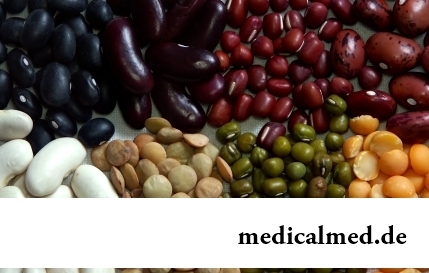
Ability of an organism to resist to adverse environmental factors (to impact of temperature drops, humidity and pressure, to the attacks of causative organisms, etc.) directly depends on what the person eats. Business here not only in that cells of a body received a necessary set of nutrients, vitamins and microelements. Scientists established that such components which are capable to influence negatively immune system, in connection with also are a part of foodstuff...
Section: Articles about health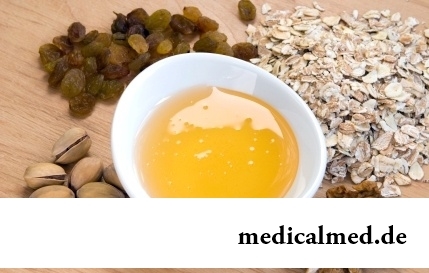
Let's begin with the fact that a separate illness which is called "adjournment of salts", just does not exist. In practice this household name of plank beds...
Section: Articles about health
The body of the person almost for 60% consists of water. It is so important for normal functioning of an organism that loss of only one and a half percent of liquid already leads to the most unpleasant effects. The problems connected with deficit of water can overtake and...
Section: Articles about health
For the last decades the diabetes mellitus of the second type became really world problem. The number of cases annually increases, and average age of patients for whom the illness is diagnosed, steadily decreases. Specialists consider that one of the main reasons for this trouble is disturbance of a diet. In other words, the huge number of people regularly overeats or excessively is fond of the products causing glucose exchange process failures....
Section: Articles about health
Maternal milk is the best food for the newborn. It is the unique natural product containing optimum set...
Section: Articles about health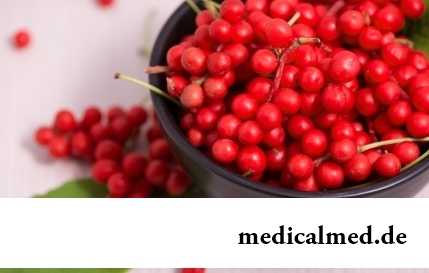
Statistically, pathologies of a thyroid gland in the world more than 500 million people have. Failures in work of this body lead to heavy disbolism, development of heart diseases, vessels, a reproductive and nervous system. In hard cases excessive...
Section: Articles about health
It seems, quite recently you brought the baby from maternity hospital, but time flew by, and here it is already going to join the first in life children's collective. How to prepare the child for visit of a garden? What needs to teach him to facilitate adaptation process? What to tell and how to behave that the kid transferred changes in the life without serious consequences? Let's try to find answers to these questions....
Section: Articles about health
It would seem, about it there can be no disagreements: water is necessary for a human body for normal zhiznedeyatet...
Section: Articles about health
The state of health of the person depends on many factors. One of the most important is the constant, but not exhausting a physical activity. In the presence of various illnesses specialists often advise patients to do swimming which by right borrows ведущ...
Section: Articles about health
Subfebrile temperature call fervescence to 38 degrees, and subfebrile condition - existence of such temperature over 3 days, and quite often it happens without the visible reasons. Existence of subfebrile condition - a strong indication of disturbances in an organism which can be caused by various reasons: disease, stresses, hormonal failures. Despite the seeming inoffensiveness it is a state at which people often continue to lead a usual life, often is a sign of many of a zabolev...
Section: Articles about health
Each person has easy indispositions which he transfers "standing", trying not to ask for medical care. Argu...
Section: Articles about health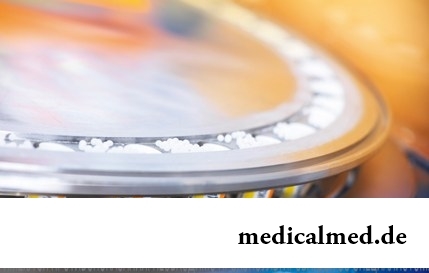
For the help to doctors in the choice of optimal solutions for treatment of various diseases the Cochrane scientific organization (Cochrane) conducts joint researches with representatives of scientific community around the world. The analysis of a series became carried out by one of the last methanolyses...
Section: Articles about health
Household skills which to us so diligently imparted in the childhood it appears, not always bring only benefit. According to results of the last researches, some habits which for a long time were considered useful and even necessary can become the reason of serious indispositions. Here only seven the most widespread of them....
Section: Articles about health
The winter swimming in open reservoirs called in our country by "winter swimming" – officially recognized sport and one of the ek...
Section: Articles about health
Such trouble as the milkwoman's attack, at least once in life happened almost to each woman. Prevalence of a disease is explained by the fact that the causative agent of an illness belongs to the so-called opportunistic microflora living on mucous an obol...
Section: Articles about health
From the failure of work of immune system which is shown in the form of an allergy, statistically, more than 40% of the population of the globe suffer. In most cases pathological reactions cause the substances which are contained in food stuffs, hair of animals, medicines, goods of household chemicals, cosmetics, pollen of plants, etc. On the one hand, the disease such is capable to spoil quite thoroughly to the person life....
Section: Articles about health
Run - one of the most available and effective ways to revitalize the organism. Knowing about its extraordinary advantage, each of us though...
Section: Articles about health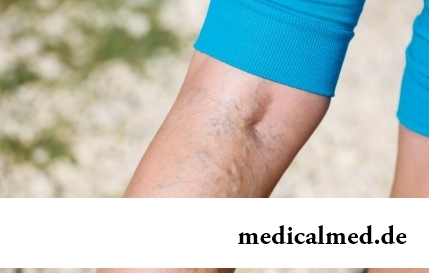
The varicosity has familiarly many, statistically, this disease more than a half of all adult population. As a rule, the varicosis affects preferential superficial vessels, and is shown by characteristic cosmetic defects. Guo...
Section: Articles about health
The business lady, the become mother, it is necessary to solve an array of problems. But of them is main: how to combine the beloved child and work? What traps trap the working mother and how she needs to behave?...
Section: Slideshow
The medicine promptly develops, and the fact that else quite recently it seemed by miracle can now. We are not surprised any more to the fact that sport...
Section: Articles about health
Kidneys perform the most important function of clarification of blood from those products of metabolic processes which cannot be used by an organism for obtaining energy and construction of new cells. With the urine produced by kidneys from a body of the person bulk is removed...
Section: Articles about health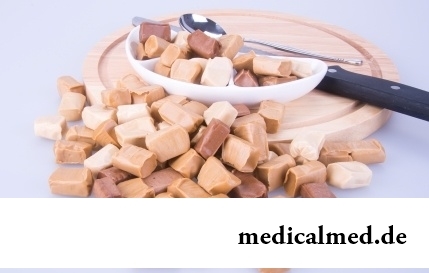
Food with the increased content of sugar is attractive to most of people - it is scientifically confirmed fact. Business here not in intemperance or dissoluteness: the sweet food is associated since childhood with feeling of rest and safety which tests the kid when it absorbs maternal milk. Besides, getting into a human body, sugar strengthens production of "happiness hormones" which all of us so need. And still life of sweet teeth seldom happens cloudless: their too big loss...
Section: Articles about health
